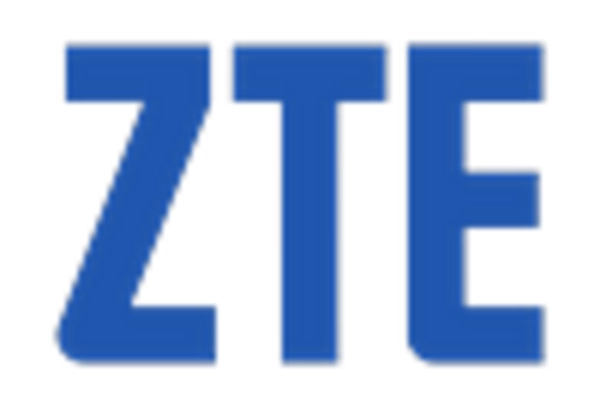The Optical Networking Market is currently characterized by a dynamic competitive landscape, driven by rapid technological advancements and increasing demand for high-speed data transmission. Key players such as Cisco Systems (US), Huawei Technologies (CN), and Ciena Corporation (US) are at the forefront, each adopting distinct strategies to enhance their market positioning. Cisco Systems (US) focuses on innovation through its extensive portfolio of optical networking solutions, while Huawei Technologies (CN) emphasizes regional expansion and partnerships to bolster its global footprint. Ciena Corporation (US) is particularly noted for its commitment to digital transformation, leveraging software-defined networking to optimize performance. Collectively, these strategies contribute to a competitive environment that is both robust and evolving, as companies strive to meet the growing needs of telecommunications and data service providers.
In terms of business tactics, companies are increasingly localizing manufacturing and optimizing supply chains to enhance operational efficiency. The market structure appears moderately fragmented, with several key players exerting influence over various segments. This fragmentation allows for a diverse range of offerings, yet the collective impact of major companies like Nokia (FI) and Juniper Networks (US) cannot be overlooked, as they continue to shape market dynamics through strategic initiatives and technological advancements.
In August 2025, Nokia (FI) announced a significant partnership with a leading telecommunications provider to deploy its latest optical networking technology across multiple regions. This collaboration is poised to enhance network capacity and reliability, reflecting Nokia's strategic focus on expanding its service offerings and reinforcing its position in the market. Such partnerships are indicative of a broader trend where companies seek to leverage synergies to drive innovation and improve service delivery.
In September 2025, Ciena Corporation (US) unveiled a new suite of optical networking solutions designed to support the growing demand for 5G and cloud services. This launch underscores Ciena's commitment to innovation and its proactive approach to addressing emerging market needs. By aligning its product development with industry trends, Ciena positions itself as a leader in providing cutting-edge solutions that cater to the evolving requirements of service providers.
Moreover, in July 2025, Huawei Technologies (CN) expanded its optical networking portfolio by introducing advanced AI-driven analytics capabilities. This strategic move not only enhances the performance of its networking solutions but also aligns with the increasing emphasis on AI integration within the industry. By harnessing AI, Huawei aims to provide more intelligent and efficient networking solutions, thereby solidifying its competitive edge in a rapidly changing market.
As of October 2025, the Optical Networking Market is witnessing significant trends such as digitalization, sustainability, and the integration of artificial intelligence. Strategic alliances are becoming increasingly vital, as companies recognize the importance of collaboration in driving innovation and enhancing service offerings. Looking ahead, competitive differentiation is likely to evolve, shifting from traditional price-based competition to a focus on technological innovation, supply chain reliability, and the ability to deliver tailored solutions that meet the specific needs of customers.


















Leave a Comment